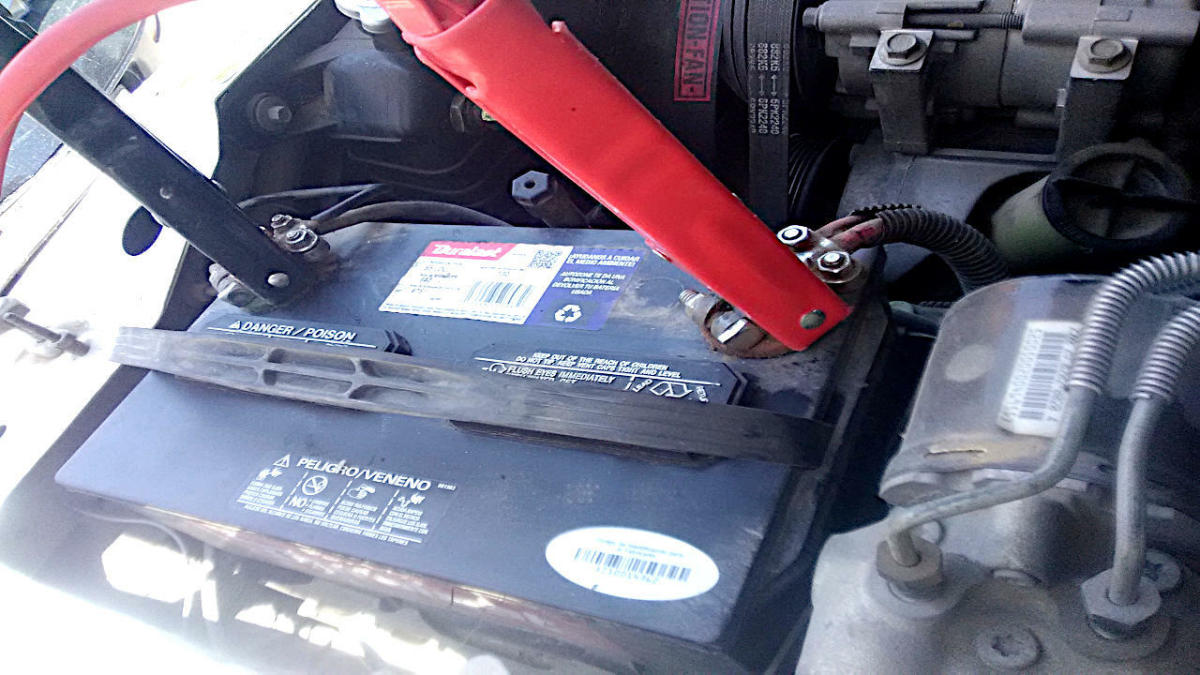How To Change 94-04 Mustang Brake Pads
Why Change Brake Pads?
Brake pads are an essential part of the braking system that many people overlook until it's too late. I'm not talking about "too late" as in their brakes don't work, but "too late" as in they didn't change their brake pads when they were almost worn out and ended up damaging more than they expected. If you let the pads wear off your brake pads, you'll end up with the metal part of the brake pads grinding against the rotors which will score them badly. If you're lucky, you'll be able to get the rotors turned for a fee but if not, you'll be spending $150+ on new rotors. So it's essential to change your brake pads before they are completely worn out.
What You'll Need
- Socket set
- Ratchet
- Hammer
- Tire iron (or socket and large ratchet/breaker bar)
- Jack
- Jack stands (2 needed, a third is handy)
- Wheel chocks
- Brake grease
- C clamp
- Caliper compression kit (no c clamp needed) or caliper compression cube (c clamp needed)
Start With The Front
- Begin by choking the rear tires, set the parking brake, and put the car in park or 1st gear (depending on your transmission).
- Open the hood and remove the cap from the master cylinder (where the brake fluid is).
- Loosen the lug nuts of the front wheels.
- Jack the car up and place 2 jack stands on the frame rail or control arms.
- Finish removing the lug nuts of the front wheels and remove the wheels.
- Each caliper is held on by 2 bolts. Find the proper sized socket for the bolts. They may be stuck on very tight so a few good smacks with a hammer (to the ratchet) should loosen them up. You can also use some PB Blaster to help loosen them.
- With the 2 bolts removed, pull the caliper off. If it's stuck, you can pry it off with a large screwdriver. Once it's off, find a place to set the caliper that won't put too much stress on the brake line. This is where an extra jack stand is handy.
- Now that the caliper is off you can simply pull the old brake pads out of the caliper brackets.
- Grab your new brake pads and spread a thin layer of brake grease on any area that will touch the caliper or caliper bracket. DO NOT put any brake grease on the area of the pads that will touch the rotor.
- Slide the new pads into the caliper bracket.
- Now it's time to compress your caliper. If you're using a c clamp, you simply need to clamp each piston back into the caliper. If you're using a caliper compression set, use the attachment that has no prongs sticking off. Keep an eye on the master cylinder at this point so that the brake fluid doesn't overflow. If it gets close, soak it up with a paper towel/rag.
- Put the caliper back on the caliper bracket. It might not want to go on easily, but a couple smacks from a hammer should get it where you want it.
- Bolt the caliper back into place. Make sure the bolts are nice and snug, you don't want them coming undone while you're driving.
- Put your wheel back on, put the lug nuts back on, and repeat the process for the other side.
- Once the car is back on the ground, torque the lug nuts down to spec.
Time For The Rear
- Begin by choking the front tires. The chocks will be the only thing holding your car in place, so do this on level ground.
- Open the hood and remove the cap from the master cylinder (where the brake fluid is).
- Loosen the lug nuts of the rear wheels.
- Jack the car up and place 2 jack stands on the frame rail or axle housing.
- Finish removing the lug nuts of the rear wheels and remove the wheels.
- Each caliper is held on by 2 bolts. Find the proper sized socket for the bolts. They may be stuck on very tight so a few good smacks with a hammer (to the ratchet) should loosen them up. You can also use some PB Blaster to help loosen them.
- With the 2 bolts removed, pull the caliper off. If it's stuck, you can pry it off with a large screwdriver. Once it's off, find a place to set the caliper that won't put too much stress on the brake line. This is where an extra jack stand is handy.
- Now that the caliper is off you can simply pull the old brake pads out of the caliper brackets.
- Grab your new brake pads and spread a thin layer of brake grease on any area that will touch the caliper or caliper bracket. DO NOT put any brake grease on the area of the pads that will touch the rotor.
- Slide the new pads into the caliper bracket.
- Now it's time to compress your caliper. You can not use a c clamp for the rear calipers. They must be twisted into place. A caliper compression set is the easiest way to do this. Use the attachment that has prong which match the 2 holes in each of the caliper pistons. Some people have used needle nose pliers and other swear by the "cube" tool. Keep an eye on the master cylinder at this point so that the brake fluid doesn't overflow. If it gets close, soak it up with a paper towel/rag.
- Put the caliper back on the caliper bracket. It might not want to go on easily, but a couple smacks from a hammer should get it where you want it.
- Bolt the caliper back into place. Make sure the bolts are nice and snug, you don't want them coming undone while you're driving.
- Put your wheel back on, put the lug nuts back on, and repeat the process for the other side.
- Once the car is back on the ground, torque the lug nuts down to spec.





